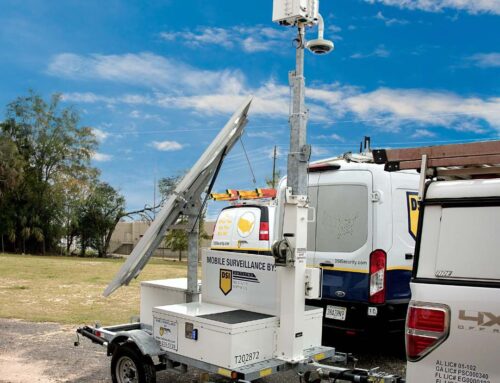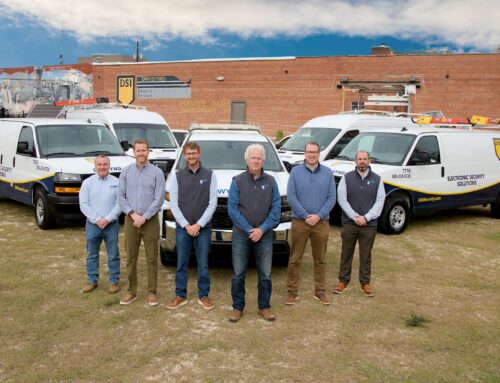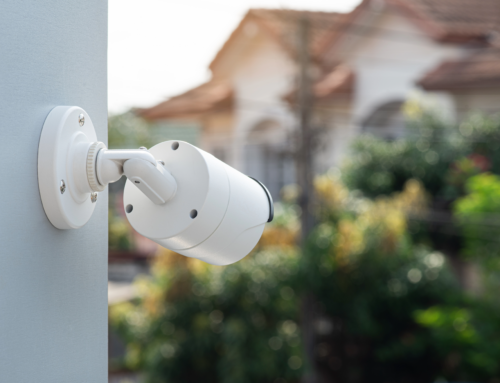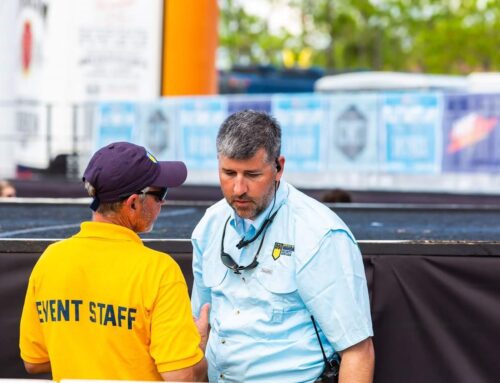
By: David Crow
It seems that everyone is an expert in security technology today. Every blog, publication, and social media influencer has an opinion about the next great thing. But to be able to invest our limited budgets smartly, we need to carefully separate long-lasting trends from short-term fads.
Real Trends Deliver Long-Lasting Results
Two lasting security technology trends I’ve observed are remote monitoring and analytics-based video surveillance. The security industry’s mission has always been to protect lives and property, but now we see an even greater emphasis on safety (meaning, protecting lives), especially when it comes to our employees.
In recent years, a retailer in New York was faced with issues stemming from civil unrest, like so many other companies. With eight security guards at one location, the concern was with putting them at risk of a confrontation with looters. The company decided to deploy a remote monitoring system with interactive technology to supplement their existing CCTV system. When the video analytics detected a possible problem, such as trespassers, an off-site team was alerted. They would then review the live footage to verify a potential threat. Next, they could remotely address the trespassers via a loudspeaker integrated with the CCTV cameras to get people’s attention and deter them from any nefarious acts.
The result? The number of security guards needed at that location was reduced from eight to three, and the number of safety incidents decreased. People simply don’t argue with a camera like they do with a guard in uniform. Plus, once you have decreased the number of employees needed to monitor one site, you can then redeploy them to other parts of the organization that can benefit more from the human touch.
With concrete results like these, it looks to me like remote monitoring with the help of analytics is a security trend that is here to stay. It’s security technology at its finest!
If the Solution Is Temporary, It May Be a Passing Fad
Fads can be difficult to spot, being that they are often hyped a lot. It’s all too easy to be drawn to the newest technology available, but it is important to ask ourselves, “What is this security technology actually solving or improving long-term?”
For example, one security technology talked about a lot since the COVID-19 pandemic started is a thermal-imaging camera for measuring body temperature. We had done testing in our labs and found that not all thermal-imaging cameras live up to the hype. For them to accurately measure body temperature, they must be installed at specific angles, in temperature-controlled environments, with the subject being at a specific distance. Most don’t do a great job at measuring the temperature of multiple people at once, which is supposed to be their biggest draw.
So, are they a good replacement for what’s already out there? Contactless thermometers, for example, are accurate (when used properly), easy to implement, and inexpensive. They’ve also been around a long time and require very little training. So, while thermal cameras certainly have their uses, I am not convinced that using them for measuring body temperature is a long-term trend.
I need to add one caveat here, being that thermal cameras have been a hotly debated topic recently. First, I know that there are companies that feel compelled to deploy technology such as this in replacement of the Near Contact Infrared Thermometer (NCIT). If that is the case, then it’s really important to do homework carefully. Don’t accept the cheapest solutions. Look for proven reliability and the highest level of delivery, and really understand the limitations and requirements for proper use. It’s the safety and welfare of our employees that is at stake, after all. Second, consider these devices as an add-on to existing physical security plans, not the sole security technology to be relied on in one particular task. They can be expanded to also perform other duties, with the evolution of applied analytics. Be clear about what you want to accomplish and use technology to augment the services you want to deploy.
Reducing Costs by Looking Ahead
One of the always-present challenges for security professionals is winning the budget battle in the C-suite. Another long-term trend can help here, I believe: brand-agnostic security technology.
New tech is often associated with huge costs. And it can be pricey, if adding a new functionality means ripping out all of your old hardware and replacing it. But, going back to the example of remote monitoring, modern video management systems (VMS) that have a brand-agnostic approach allow one to mix and match as well as to add, rather than replace all needed components.
It is getting easier to simply layer on needed analytics (people counting, for example, or heat mapping of movements) while keeping much of the existing system in place. It is also getting easier to expand or change camera configurations at specific sites to achieve stronger security. Flexible systems are key to lower long-term costs, but they do require having a foresight to select them in the first place.
Every year, our budgets get squeezed more and our team’s responsibilities increase as we continue to face new challenges. This is probably another long-term trend. And the answer to it, I think, is having the ability and foresight to separate lasting trends from passing fads, and place our bets on security technology that has the flexibility to adjust as our needs evolve.






